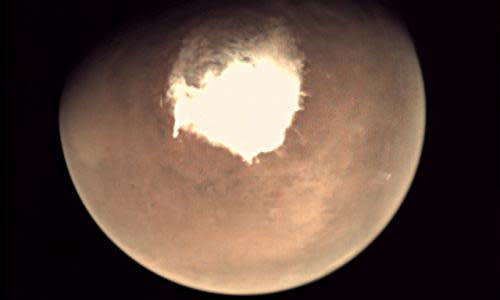Mars is spectacular this month – here’s the best way to spy the red planet

If you look at the sky tonight and spot a very bright star, it may well be a planet. Mars is the closest it has been to Earth for 15 years – and therefore the brightest. “Mars shines through reflected light,” says Robert Massey, the deputy executive director of the Royal Astronomical Society. “That means that when it’s closer to the Earth it appears brighter, because its apparent size is bigger.” It won’t be this visible again until 2035.
So, how best to see it? First, make sure tall trees or buildings are not obscuring the view. Ideally, you want a clear horizon. Then, look south. “It will be obvious, because it’s bright, it doesn’t twinkle and it has a distinct reddish tinge,” says Massey, who suggests Somerset, Devon and Dorset as good locations for spotting it. The best Mars-gazing time is 1am, but it rises earlier in the evening.
“You can see Mars with the naked eye, but a pair of binoculars would help,” says Massey. “If you have a small telescope, you may be lucky to see a polar ice cap.”
If you are an amateur with good equipment, the details to look out for are two polar ice caps, mountains or volcanoes, and sunken, crater-like features. Massey suggests contacting your local astronomical society about public viewing events.
Mars will be at its closest at the end of July – and 27 July will be an astronomical double whammy: the brightest Mars and a total lunar eclipse. But what if the weather deteriorates? Will we still see anything? Apparently, yes. The view during the weeks after opposition – the closest point – are almost as good, says Massey.
If you are going abroad, you will probably still be able to catch it. Mars will be better the further south you go. From Ibiza or the Norfolk Broads, you will be fine, but you may struggle in the Arctic Circle.
For astronomers, this is not a small affair. Massey describes it as a “rare moment”, for the planet’s details are tantalisingly difficult to see. Although Mars is the second-closest planet to us, it is small – half the size of Earth – and still tens of millions of miles away. “Mars has always fascinated people, because we think it’s the place that’s most like Earth,” says Massey. “We could imagine going for a stroll on Mars. It would be incredibly intriguing to explore and it may just harbour primitive life under the surface ... It [would also help] us answer that enduring question: are we alone in the universe?”

 Yahoo News
Yahoo News 